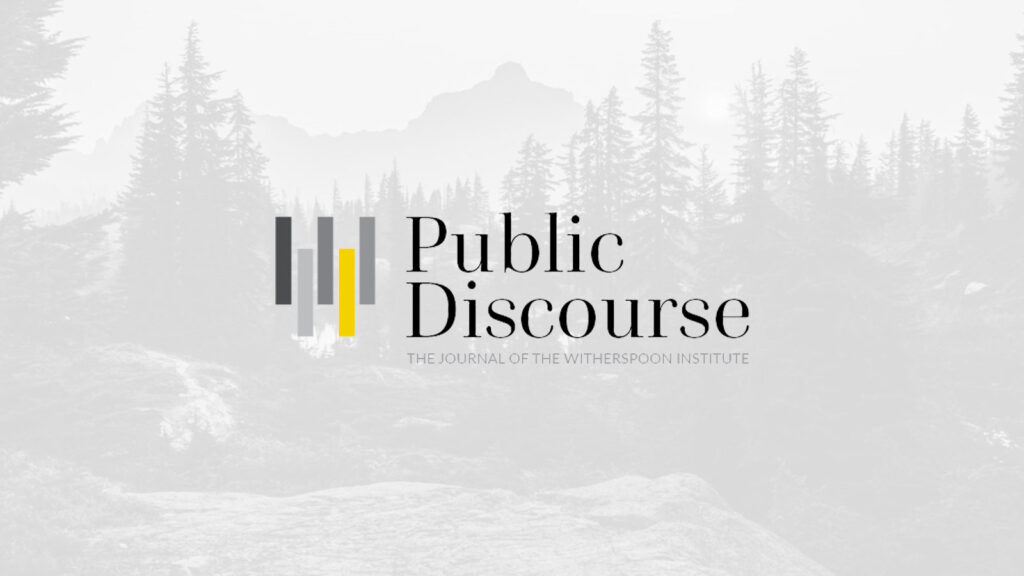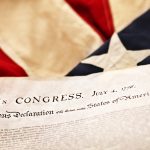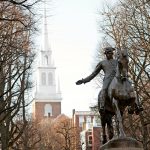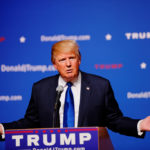Is it really true that America’s political and social life has fundamentally changed since its birth? Have we departed from the “golden age” of the founding? If so, when did this change happen, and did the founding itself make the change likely?
These questions, especially whether we can trace America’s problems to the founding, are hotly debated among conservatives, including here at Public Discourse by Philip Muñoz, Patrick Deneen, and Nathan Schlueter. Stephen M. Krason enters the conversation with his new book, The Transformation of the American Democratic Republic. As the title suggests, Krason, a professor of political science and legal studies at Franciscan University of Steubenville, traces a gradual departure from the institutions, principles, and social conditions of the Founding, even though his interpretation of the founders’ views is debatable in many ways.
Krason’s first chapter explains the institutions, principles, and social conditions necessary, in the founders’ view, to sustain a democratic republic. His outline is a broad one, not designed to favor any one interpretation of the founding. He then surveys American history from 1789 to the present to see if and when America departed from its framers’ vision.
Of course, the task is enormously ambitious: Krason spans America’s political, legal, economic, social, and philosophical developments in each major period of our history. His goal isn’t to describe any one era in great depth, but to give an overview that can be compared to the founding era. Krason’s approach has many virtues and the result is a valuable summary of trends in American history.
Start your day with Public Discourse
Sign up and get our daily essays sent straight to your inbox.Krason’s discussion of social developments is especially informative: He notes that even during the 1780s and 1790s, some cultural changes were subverting the founders’ aim to establish a lasting democratic republic by promoting individualism. In American religion in the 1790s, for example, “[m]an was slowly being made the center, displacing God.” And early in American history, more women started working outside the home, which over time transformed the family.
Divorce rates, birth rates, and other social statistics support Krason’s picture of gradual changes in American religion and family life, some of which started immediately after the Constitution was ratified. His focus on social and cultural trends balances out other accounts of American political development that focus exclusively on institutions and principles.
The book’s strengths are also its limitations. Because its scope is so broad, Krason draws almost exclusively from secondary sources. This makes the work useful as an excellent collection of insights from other contemporary authors, but not as a source of new research.
Further, while Krason’s account doesn’t bore the reader with obscure details, its generalizations are often controversial or questionable claims that demand further explanation. Some of its claims about the founders’ intentions would be contested by other scholars today.
Krason says repeatedly, for example, that the founders staunchly defended small-scale enterprise, and would have discouraged the rise of large corporations. He also argues that the founders disliked economic inequality and would have criticized the large gap between rich and poor in the early twentieth-century economy.
These claims lead Krason to a particularly curious interpretation of the 1920s. He is quite hard on Calvin Coolidge for working to unleash free enterprise, which produced “the concentration of wealth and great disparities of wealth” that “clashed with the prevailing principles of the Founding culture.” By contrast, the true preserver of the founders’ democratic republic during this period, according to Krason, is Herbert Hoover, whose “economic ideas actually show an affinity to those of the Founding era.”
Krason isn’t obviously wrong about Coolidge, Hoover, and the founders. But he doesn’t adequately defend his understanding of the founding.
Certainly the founders rejected the idea of laissez-faire, and some of them (particularly Thomas Jefferson and James Madison) were skeptical of capitalism and economic inequality at various points during their public careers. But one can find many founders who took a very different view of economic matters. The point is that in order to compare developments in American history to the intentions of the founders, it is necessary to develop and defend the account of the founders’ handiwork and intentions thoroughly. Skeptics of Krason’s argument will find much to quibble with in his interpretation of the founders’ approach to economics and socio-cultural institutions.
In short, perhaps if Krason had chronicled just the social and cultural developments of American life, he could have defended his claims more thoroughly. Instead, his broad outline of the founders’ design for all aspects of American life leaves some parts of his argument inadequately explained or supported.
Krason concludes tentatively that the founders are partially responsible for our democratic republic’s decline. Their handiwork began to unravel fairly soon after they left the scene, but a “snowball” effect hastened the process. Today, “every single principle of the Founding Fathers for the sustenance of a democratic republic” is “either no longer in force or compromised to at least some degree.”
What were the most significant periods of decline? Krason focuses on three specific eras: the Jacksonian period (1817-1840), the “Gilded Age” and World War I (1877-1920), and the years 1960-1980. He identifies less severe signs of decline in other periods, such as the lowered emphasis on the liberal arts in higher education from 1840 to 1877. But these three eras represent the most important turning points.
For Krason, the radical democratization of the Jacksonian period (which “was clearly contrary to the Founders’ beliefs”), combined with increased emphasis on self-interest and material wealth, joined developments in religion and the family to produce a much more individualistic culture. Unlike other accounts that cite the Progressive era as the first strong break from the founding, Krason argues that it started much earlier: The country had already experienced an important philosophical and cultural transformation by the time the Civil War started. This is an important and often-overlooked point, and he does well to highlight the importance of the Jacksonian period.
The two other phases of radical transformation occurred from 1877 to 1920 and 1960 to 1980. The former period “brought about the emergence and increasing domination of great, centralized economic power and business” as well as a “new era of bureaucratization” and “positivistic jurisprudence.” Due to these changes, “[t]he connection between ethics and economics was decisively severed” and “enduring division and tension among different social groups and a lack of civic friendship took hold.” All these problems indicated “the decisive erosion of the natural law-natural rights tradition of the Founding.”
In the latter period almost every cultural norm upheld by the founders was overthrown. The administrative state was “consolidated” and “the breakdown of sexual morality … and of the family” occurred. “Secularization and the public marginalization of religion reached their zenith” and “suspicion and conflict among different social groups became widespread as never before in the country’s history.”
While developments in other periods marked important changes from the founders’ design, it was in these three eras that radical individualism, economic and political centralization, and the decline of religion and the family were fully realized.
Krason doesn’t argue that the founders “are the fundamental cause of the ultimate transformation of the political order,” but he does claim that weaknesses in the founding made it vulnerable to the changes that were to come. Foremost among these weaknesses was the individualizing tendency of the founding principles. Without sufficient emphasis on the social and cultural supports of an orientation toward the common good, the protection of liberty and individual rights promised by the founding too easily descended into self-seeking. The founders simply did not put forth a sufficient understanding of the common good or of community, “due to insufficient philosophical reflection.”
In addition, Krason argues, the founders failed to anticipate the decline of religion in a democratic society, and their conception of natural rights was not backed up by an institution (such as the Catholic Church) to serve as an expositor of the natural law, which eventually led to a human institution (the Supreme Court) serving as the interpreter of natural law as it applies to questions of public policy.
It should be stressed that Krason does not lay the blame solely at the founders’ feet for these weaknesses—he is tentative in his conclusions. But as some scholars have noted, the founders have some responses to these objections. They were not advocates of individualism and laissez faire, and as Thomas West has demonstrated in Vindicating the Founders, they did have a relatively robust understanding of the role of religion and the family in a well-functioning republic. In Krason’s defense, however, these were not dominant elements in the founders’ writing or thought, and their failure to make those thoughts more public probably made it easier to transform their handiwork.
The Transformation of the American Democratic Republic surveys a wide landscape and is an excellent source for those seeking a broad history of American political, economic, and cultural development. While some of its claims about the founders’ views are debatable, on the whole Krason’s view of the founding is accurate. And it is difficult to argue with Krason’s basic thesis that America has deviated greatly from the principles and practices followed at its origin.














